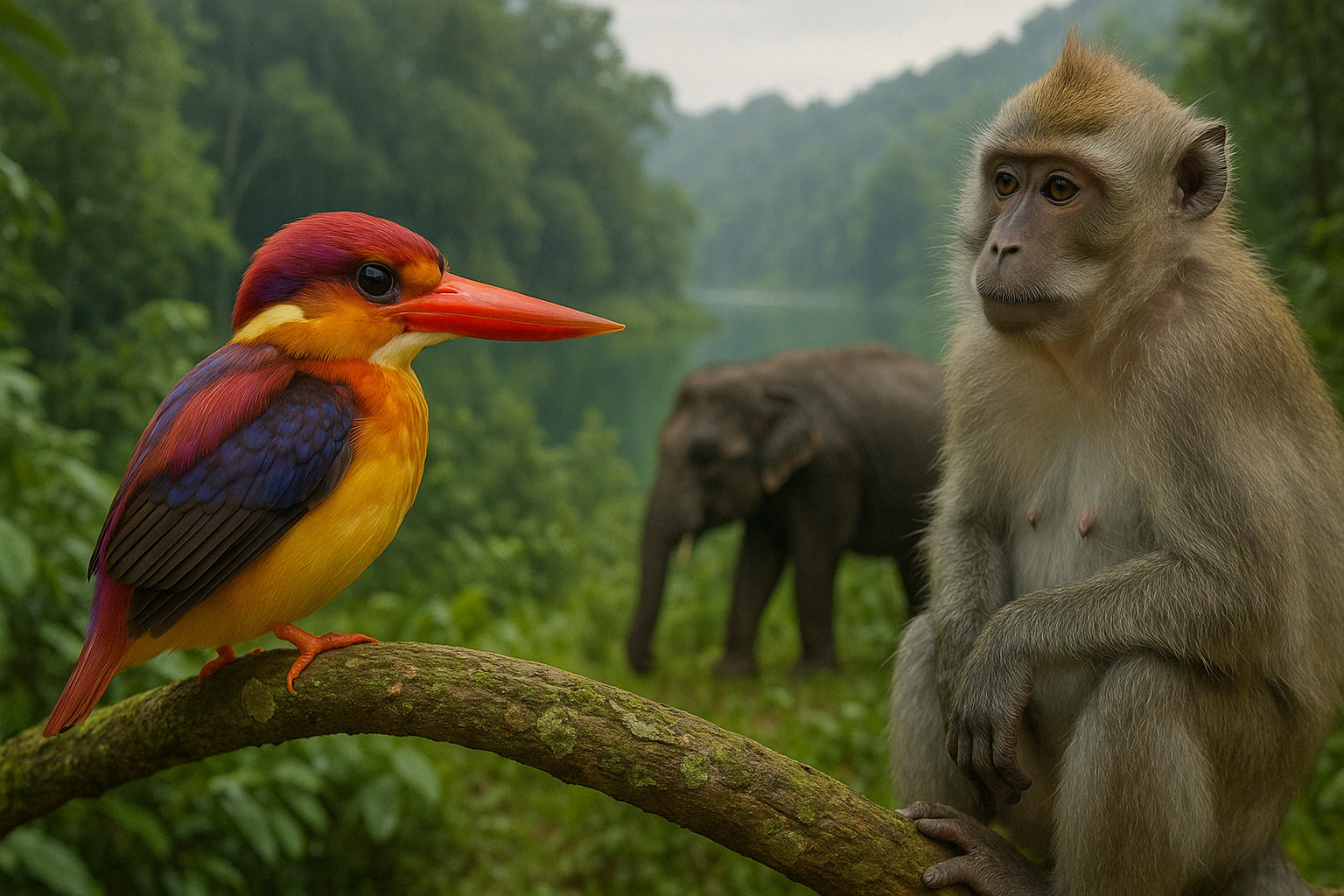Tasik Kenyir’s seasonal shifts create changing rhythms in the wild. Knowing what animals are active throughout the year can help you plan your trip with purpose, whether you’re a casual observer or wildlife photographer.
Spring (March–May): Courtship and Song
Spring in Kenyir arrives with vocal forests and restless canopies. This is mating season for many bird species. The Rufous-backed kingfisher, Asian fairy-bluebird, and Hill myna are frequently heard and seen. Their bright plumage and vocal displays are a direct result of courtship behavior.
Reptiles like water monitors and reticulated pythons begin to stir more often under the warming sun. Amphibians, particularly tree frogs, grow more vocal at night with seasonal rains creating new temporary pools. If you’re lucky, you may spot hornbills gathering fruit near fig trees—important seasonal feeding grounds for these large birds.
Key Highlights:
- Peak birdwatching window
- Reptile basking becomes common
- Frog calls dominate night hours
Summer (June–August): Abundance and Young Life
Summer brings growth, plenty of food, and new offspring. The forest becomes alive with movement. Malayan tapirs and dusky leaf monkeys are often spotted foraging with their young. River edges attract otters, who fish and teach their pups hunting skills.
This season also coincides with fruiting cycles of many forest trees. As such, bats, civets, and sun bears increase their activity, especially during the evenings when fruit is most aromatic. Trails may show more signs of ground-dwellers like wild boars and porcupines, whose foraging increases.
The lake’s surface often teems with insects, drawing in insectivores such as swallows, dragonflies, and even fishing spiders.
What to Expect:
- Active mammals with young
- Rich fruiting forests attract omnivores
- Prime time for observing feeding behaviors
Autumn (September–November): Transition and Movement
Rain begins to return, marking seasonal change. Many birds begin short migrations, including bee-eaters and flycatchers that move through the area. This is also the time when insect populations surge, bringing bats out in large numbers after dusk.
Increased rainfall revives the lake’s edges and encourages amphibians to return in full voice. Some rare sightings, like the Asian arowana, become more likely as water levels rise and aquatic movement changes.
This is also a quieter time in terms of human presence, which draws out shy creatures like binturongs and the clouded leopard, though spotting them remains a matter of luck and timing.
For travelers seeking solitude and wildlife action, many agree this is the best season to visit Tasik Kenyir.
Seasonal Behavior:
- Bird movement increases
- Rain stirs activity across all species
- Amphibian and aquatic behaviors become more prominent
Winter (December–February): Silence and Subtlety
Rain dominates, and activity patterns shift. Many creatures become elusive. Still, those who venture into Kenyir’s quieter months are rewarded with sightings of species less active in high-traffic seasons.
Elephants begin longer-range movements across the forest corridors. Their signs—tracks, dung, stripped bark—tell stories even when sightings are rare.
Some of the most fascinating life becomes easier to observe. Insects like stick bugs and mantises become easier to find due to slower movements and increased visibility. The nocturnal forest grows louder with cicadas, owls, and occasional calls of the slow loris.
Notable Changes:
- Elephant movement increases
- Nocturnal activity heightens
- Low visibility and high humidity reduce daytime sightings
Summary of Seasonal Wildlife Activity
| Season | Wildlife Focus |
|---|---|
| Spring | Bird courtship, reptile basking, frog breeding |
| Summer | Mammal foraging, young offspring, fruiting season activity |
| Autumn | Migratory birds, insect boom, rising aquatic visibility |
| Winter | Nocturnal fauna, elephant tracks, elusive encounters |
Seasonal knowledge helps make sense of Tasik Kenyir’s living system. No two visits offer the same sightings—but each season brings its own signature of life in motion.
